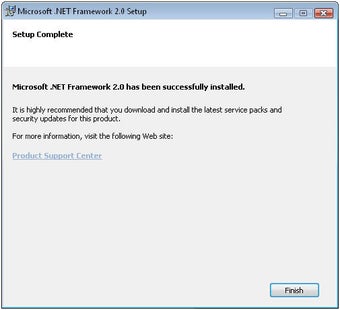.NET Framework 2.0: Coders’ best friend and the best of its time
Screenshots
.NET Framework 2.0, released by Microsoft in 2005, was a significant upgrade from its predecessor, introducing numerous enhancements and features that marked a leap forward in software development. It was designed to provide a comprehensive and consistent programming model for building applications that visually stunning user experiences and seamless and secure communication.
Key features of .NET Framework 2.0
One of the standout features of .NET Framework 2.0 was its improved Base Class Library (BCL). This included expanded collections, enhanced support for generic types, and improved personalization capabilities. The BCL provided a more extensive set of class libraries and APIs, which were a boon to developers, enabling them to write applications more efficiently and with fewer lines of code.
Another significant enhancement was the introduction of ASP.NET 2.0. This iteration brought in advanced web controls, master pages, and themes, greatly simplifying web development and allowing for the creation of more dynamic and interactive web applications.
.NET Framework 2.0 also marked the debut of Visual Studio 2005, which was tightly integrated with the framework. This integration provided a more robust and intuitive development environment, complete with enhanced debugging and a suite of new tools that significantly improved the productivity of developers.
One of the key components of .NET Framework 2.0 was its support for generics, allowing for type-safe data structures without the performance overhead of boxing or unboxing. This feature alone dramatically improved performance and allowed developers to create more efficient and reliable applications.
Is .NET Framework 2.0 still supported?
.NET Framework 2.0 is no longer supported by Microsoft. The company has shifted its focus to more recent versions of the framework, particularly .NET 5 and later versions, which offer more advanced features, improved performance, and better security. It's important for developers and businesses to migrate their applications to these newer versions to ensure continued support, security updates, and compatibility with modern hardware and software.
Can I Install .NET Framework 2.0 on Windows 11?
While it is technically possible to install .NET Framework 2.0 on Windows 11, it's not recommended due to the lack of official support from Microsoft. Newer versions of Windows are optimized for the latest versions of the .NET Framework, and using an outdated framework like 2.0 could lead to compatibility issues, security vulnerabilities, and suboptimal performance. Developers and users are strongly encouraged to use the latest supported version of the .NET Framework or to migrate to .NET 5 or later.
Final verdict
In retrospect, .NET Framework 2.0 was a landmark release that significantly influenced the landscape of software development. Its introduction of generics, improved BCL, and the integration with Visual Studio 2005 were groundbreaking at the time and laid the foundation for future advancements in the framework.
However, the technology landscape has evolved considerably since then, and what was once cutting-edge is now outdated. The discontinuation of support for .NET Framework 2.0 is a clear indicator that the technology industry is rapidly moving forward, emphasizing the need for modernization and the adoption of newer, more secure, and more efficient frameworks.
Certainly, there's an additional perspective to consider when discussing .NET Framework 2.0, especially in the context of older hardware or for specific experimental purposes.
For enthusiasts, hobbyists, or professionals working with legacy systems, .NET Framework 2.0 can still be a valuable tool. In scenarios where newer versions of the .NET Framework or Windows are not compatible with older hardware, .NET Framework 2.0 offers a viable solution. This is particularly relevant in situations where updating hardware is not feasible due to cost, availability, or specific legacy requirements.


